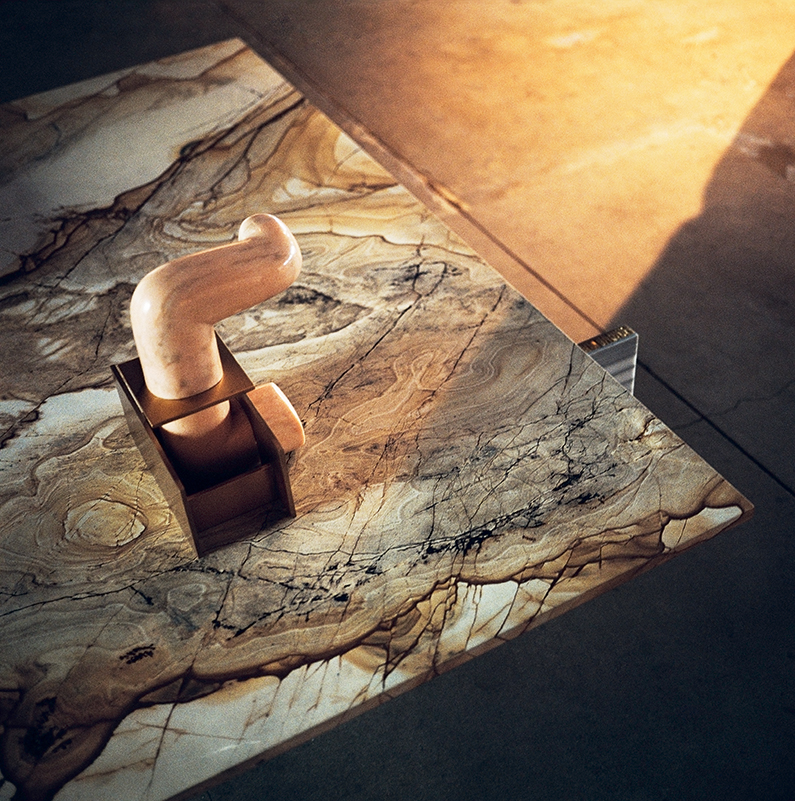Purple Magazine
— Purple 25YRS Anniv. issue #28 F/W 2017
Robert Stadler
design
at the noguchi museaum
interview by MIKAEL ZIKOS
portrait by ALEX ANTITCH
photography by OLIVIER ZAHM
in “Solid Doubts,” Robert Stadler’s exhibition at the Noguchi Museum
All Robert Stadler works courtesy of the artist and Carpenters Workshop Gallery, Paris
All Isamu Noguchi works, collection of the Noguchi Museum, New York
 ISAMU NOGUCHI, PINK JIZO, SCULPTURE, MARBLE AND BRASS, 1960; ROBERT STADLER, CUT_PASTE #8, TABLE, MARBLE AND ALUCORE, 2015
ISAMU NOGUCHI, PINK JIZO, SCULPTURE, MARBLE AND BRASS, 1960; ROBERT STADLER, CUT_PASTE #8, TABLE, MARBLE AND ALUCORE, 2015
Robert Stadler was born in Vienna in 1966. In 1992, he cofounded RADI DESIGNERS, an experimental group famous for uncanny industrial objects whose role in the history of design is something like that of an alternative music group. Since the turn of the millennium, Stadler has gone on to create his own products and installations for manufacturers as well as museums and galleries. Fun, suprising as well as functional, his pieces embrace the hardness…